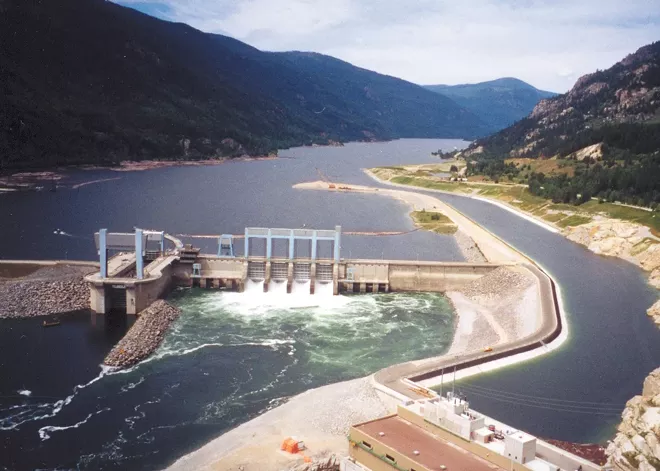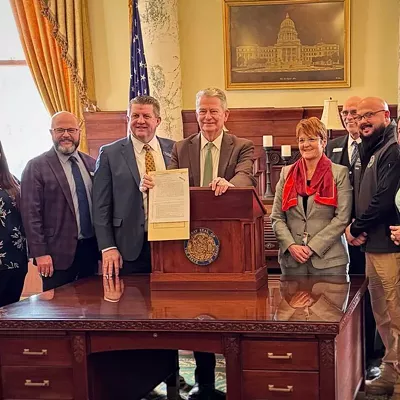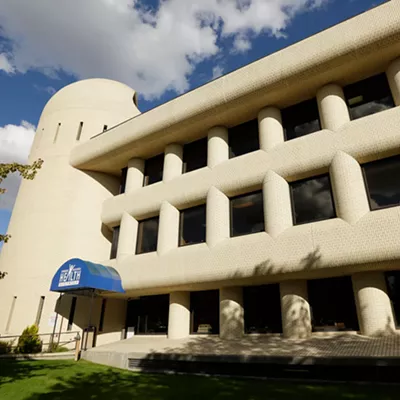
For 60 years, the Columbia River Treaty has guided how Canada and the United States operate dams along the international river for both power production and flood control. With the potential for the treaty to expire this year, groups on either side of the border started reviewing the agreement as far back as 2010, and negotiations to update it started in earnest in May 2018.
Last week, on July 11, the countries announced they'd reached an agreement in principle.
Key among the changes — which have yet to be drafted in their final form for the treaty update — is a reduction in the "Canada entitlement."
Since the treaty took effect in 1964, Canada has stored additional water behind dams it built on the river to help with flood control downstream. In return, Canada has received half of the power generated by dams on the U.S. side of the border thanks to that increased storage to the north. Canada then sells much of that power back to the U.S.
The modernized agreement "will result in an immediate 37% reduction in hydropower that the United States delivers to Canada under the current agreement, and a reduction of 50% by 2033," according to an update from the U.S. State Department. "This will retain more clean energy in the United States to support a thriving modern economy without a diminishment of Canada's current clean energy mix."
The updated treaty will maintain flood risk management via "pre-planned storage space behind Canadian Treaty dams."
U.S. Sen. Patty Murray, D-Wash., issued a statement noting that the agreement in principle is "an important step forward for Washington state and the entire Northwest.
"I am hopeful the agreement successfully meets our objectives and works for ratepayers, tribes, river users, our local ecosystems, and everyone on our side of the border," Murray's statement continues.
Regional tribes had hoped that their sovereign nations would be meaningfully involved in the treaty negotiations, particularly since the original treaty was drafted without tribal input. Indigenous Nations were full participants on the Canadian negotiating team. Meanwhile, the U.S. team, made up of members representing Bonneville Power Administration and other federal agencies, was advised by tribes, including the Coeur d'Alene and the Confederated Tribes of the Colville and Umatilla reservations. The Inlander sought comment from the Coeur d'Alene and Confederated Colville tribes but did not receive a response before our print deadline.
In her statement, Murray says, "I pressed the administration to engage with tribes and stakeholders in the Northwest as openly as possible throughout negotiations and continue to do so now through the drafting process."
Along with the tribes, regional environmental nonprofits had hoped that the ecosystem health of the river and its tributaries could become an important third prong of the treaty. However, it doesn't appear that the update will meaningfully address ecosystem health.
"We were focused on the health of the river and seeing that the Columbia River Treaty become a positive tool to help address the problems the river and its populations face today," says Joseph Bogaard, executive director of Save Our Wild Salmon and the chair of the Columbia River Treaty nongovernmental organization caucus. "Fish in the river effectively get status quo treatment [under] the current agreement in principle, whereas flood risk management and the power sector received sort of clear and certain benefits moving forward."
That leaves salmon and the health of the river as second-tier priorities at best, Bogaard says.
"There's really no significant changes to prioritize the health of the river," Bogaard says. "It all feels really uncertain right now."
The State Department's announcement says that Canada and the U.S. intend to "further cement and expand Tribal and Indigenous inclusion in a modernized Treaty regime" by establishing an Indigenous-led group that will recommend how to support the ecosystem and cultural values.
"This body will provide an essential voice for U.S. Tribes and Canadian Indigenous Nations concerning possible adaptations of future operations to support a healthy ecosystem, improve salmon survival, and address cultural values of those who have been stewards of this resource since time immemorial," according to the State Department.
The treaty update will also support healthy salmon by including "a long-term agreement to continue water flows [flow augmentation] from Canadian reservoirs to support salmon migration throughout the basin, including a strategy to bolster flows during dry years," according to the State Department. "Furthermore, both countries are committing to coordinate on studies on salmon reintroduction, which are led by U.S. Tribes and Canadian Indigenous Nations."
Once the negotiators finalize the details of the new treaty, it will be sent to the U.S. Senate for ratification. ♦





















